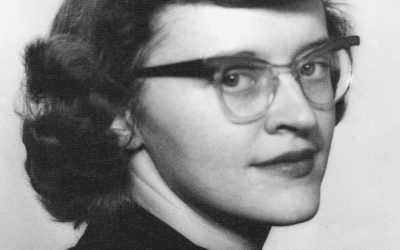
Photo Courtesy of Pinconning Cheese Co.
As Michiganders, we put onions on hot dogs, olives on hamburgers, and snack on Polish donuts in February. But have you ever wondered why? In our Michigan Moments: Food series, we’re checking out the history behind iconic Michigan foods and beverages. This is the second article of the series. Look for a new one every Wednesday!
MICHIGAN—Though it may come as a surprise to you, food from the Midwest might be considered unusual by our coastal neighbors. Midwestern cooking often combines culinary traditions from our families’ immigrant backgrounds, locally grown and produced ingredients, and the foods of Indigenous tribes. And in Michigan especially, our home cookin’ includes provisions that were concocted, bottled, and packaged by mitten-state entrepreneurs. If you’re curious about the history of some of your favorite foods and beverages, read on to discover how Michigan history creates Michigan culture.
Pinconning Cheese
Hold your charcuterie boards. Did you know Michigan has a cheese capital? Pinconning, a city in the Bay Area started out as a lumber town. In the early twentieth century, Pinconning began transitioning to agriculture – but by 1915, dairy farms had flooded the market, leading to an oversupply of milk. Enter Dan Horn, a Russian immigrant who had formerly worked as a cheesemaker in Wisconsin before moving to Pinconning.

Colby cheese was itself named after a city in Wisconsin and Dan Horn had invented his own take on the Wisconsin cheese. His variation did not need to be stored at temperatures as low as Colby, which was a welcome benefit in an era without refrigeration. It also gained more flavor as it aged, which could go for as long as 120 months.
Horn’s cheese, called Pinconning cheese, was first sold at the Horn Grocery Market on old US-23. It was a strategic location, since plenty of hunters, campers, and anglers used the highway to travel to the Detroit area. Dan finally sold the grocery store to his daughter, Inez Wilson, in 1939. Inez and her husband Lawrence turned the grocery store into Wilson’s Cheese Shoppe. Demand was so high for Pinconning cheese that the Wilsons expanded operations several more times in the next decade or so, including a restaurant called Wilson’s Dairy Bar.
By the late 1950s and early 1960s, Inez Wilson had decided to start advertising her father’s trademark cheese, promoting via radio, road signs, celebrity endorsements, and the two trademark giant mouse mascots named after Inez and her daughter, Jenny.

Wilson Cheese Shoppe still operates today, selling the famous savory Pinconning cheese as Dan Horn made it more than a century ago.

VIDEO: Trump isn’t the only republican facing charges for alleged financial crimes
https://www.tiktok.com/@gandernewsroom/video/7361494909938978090 A whole lot of Michigan Republicans and lobbyists are facing criminal charges for...

VIDEO: It’s expensive to be poor in Michigan
https://www.tiktok.com/@gandernewsroom/video/7361154790300060974 Ever heard of predatory payday loans? Here’s how new laws could help protect...

Here’s everything you need to know about this month’s Mercury retrograde
Does everything in your life feel a little more chaotic than usual? Or do you feel like misunderstandings are cropping up more frequently than they...

The ’Gander wins multiple 2023 Michigan Press Association awards
MICHIGAN—The ’Gander Newsroom has earned multiple awards in the 2023 Michigan Press Association Better Newspaper Contest. The awards were announced...

Michigan Republicans ask Supreme Court to restrict medication abortion access
A lawsuit supported by Republicans could disrupt access to the most common form of abortion—even in Michigan, where reproductive rights are...






